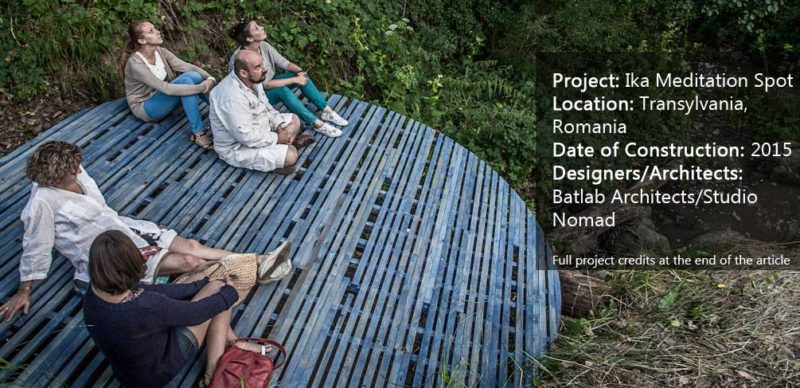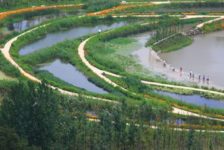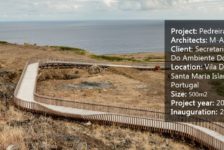Article by Elisa A.M. Varetti Ika Meditation Spot, by Batlab Architects and Studio Nomad, in Csernaton, Transylvania, Romania. Everybody knows how human beings affect the environment with all of their activities, as LAN writer Harkyo Hutri Baskoro reminds us in his article 10 Fascinating Climate Change Facts You Should Know. We all need to start changing our lifestyles to save the planet. But what you might not know is that there are other ways in which human beings are destroying the natural world; for example, by neglecting natural places. We need to start treating Mother Nature better if we want to avoid unpleasant results. That doesn’t only mean that we have to reduce pollution; we also need to start protecting our natural resources. Landscape architects are once more called upon to make people understand how the natural world and the different ecosystems are important for ourselves and for our planet. In order to do so, they need to focus on critical situations. That is exactly what Batlab Architects and Studio Nomad have done with their project Ika Meditation Spot, which they collaborated on with the CsomòPont Team for the Noise Workshop 2015, in the Csernation Region of Transylvania in Romania.

Ika Meditation Spot. Photo credit: Bence Pásztor
Ika Meditation Spot
A Spot to Save Nature from Abandonment
We all know names hold great power, and Ika Meditation Spot is no exception. The name refers to a decayed portion of the stream Ika, on which the designers wanted people to reflect. The focus of the project is to create a spot where visitors can feel in harmony with nature and discover again the beauty of this place, with the hope that this will lead to its restoration and maintenance.
Less is More
The real strength of the project is its simple design. As Mies Van Der Rohe used to say, “less is more” and indeed he was right! Ika Meditation Spot is basically composed of a wooden disc with a diameter of four meters. But it is capable of creating a magical connection between visitors and the surrounding environment. Like two sides of the same coin, its design is simple, but at the same time it has a deep meaning that it manages to evoke from those visiting it.
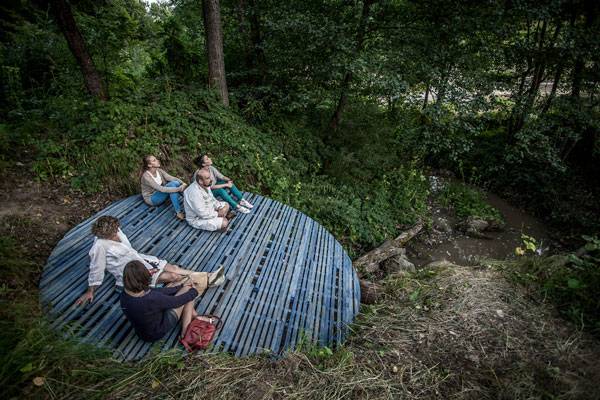
Ika Meditation Spot. Photo credit: Bence Pásztor
Constructing with Nature
One of the most interesting things about the design is that it takes advantage of the natural elements already existing in the environment, such as the peculiar geometry of the site deriving from the collapsed bank of the brook. Here, the trunk of a fallen tree forms the basis of the meditation spot, giving it a slight angle pointing toward the stream. Cantilevered beams clamped by wooden columns buried in the ground support the wooden disc. “By installing the disc, a new place is born,” the designers say.
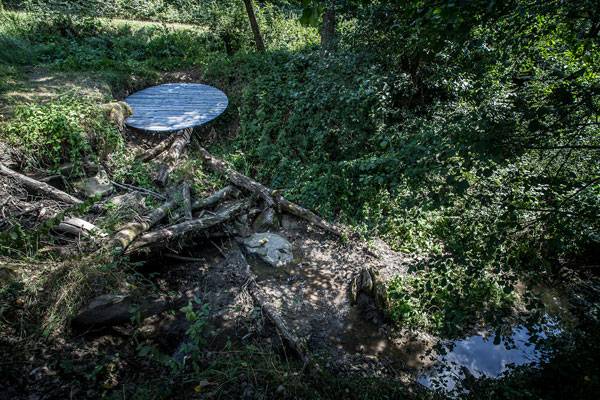
Ika Meditation Spot. Photo credit: Bence Pásztor
Different Levels of Reflection
The project provides visitors with a number of things to reflect on, from the neglected situation of the stream Ika to our planet’s status, by giving them a place where they can relax in close contact with nature. Its special position — in the very heart of a natural ecosystem — offers people an intimate connection with the environment. Ika Meditation Spot will be left to serve its function until nature reclaims it.
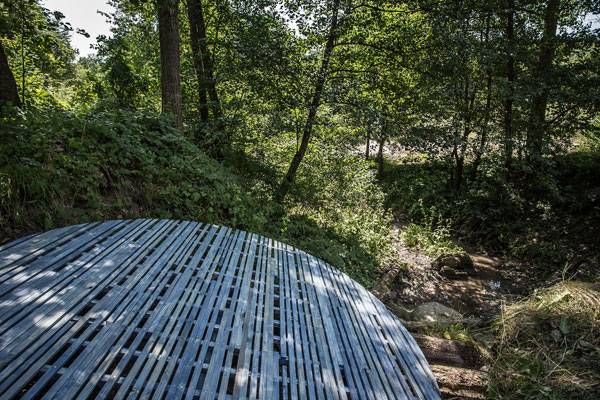
Ika Meditation Spot. Photo credit: Bence Pásztor
Awareness is the First Step Toward Change
The final aim of this project is, of course, to focus people’s attention on the forgotten situation of this area of the stream, which has been abandoned in the past. Batlab Architects and Studio Nomad have designed a space capable of growing interest in those visiting it, and it is most likely that they’ll manage to make them understand the importance of protecting the environment of this stream. Raising awareness in people’s minds is an ambitious but important task to which we all have to contribute, and these two firms clearly know how to do it. Their action is likely to lead to the restoration and maintenance of this area in Transylvania.
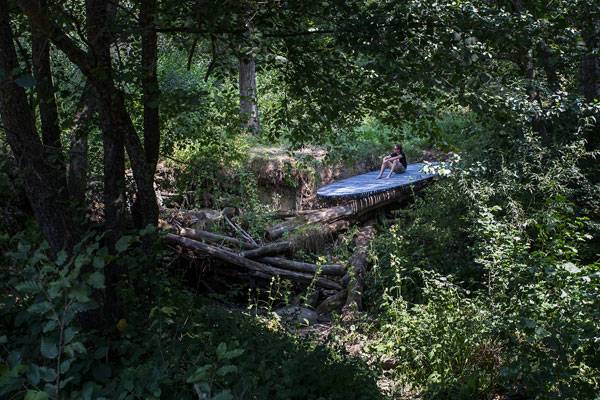
Ika Meditation Spot. Photo credit: Bence Pásztor
Restoring Natural Environments
This project clearly shows what landscape architects can do to make people reflect upon the status of the natural environment. In the last few years, we have seen how different countries have been dealing with this same situation. All of a sudden, they seem to have realized the importance of a natural environment for people’s welfare. Every now and then, river parks are created to restore industrial spaces, abandoned environments, and neglected areas.

Ika Meditation Spot. Photo credit: Bence Pásztor
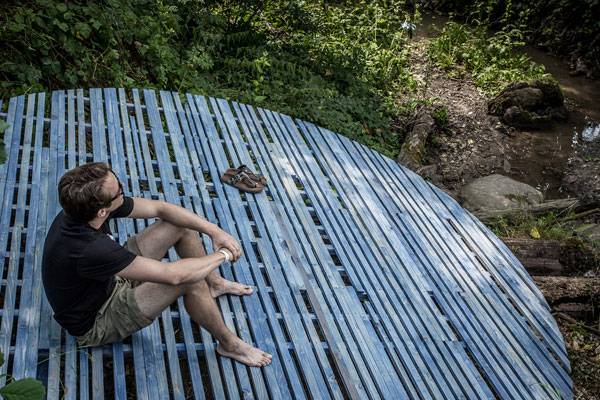
Ika Meditation Spot. Photo credit: Bence Pásztor
Full Project Credits For The Ika Meditation Spot
Project Name: Ika Meditation Spot Location: Csernaton Region, Transylvania, Romania Date of Construction: 2015 Designers/Architects: Gergő Batizi-Pócsi and Péter Batizi-Pócsi /Batlab Architects Bence Pásztor /Studio Nomad Team Members: Botond Bölöni, Zoltán Gál /CsomóPont/ Photography: Bence Pásztor Get Social With Batlab Architects: Website: www.batlab.hu Facebook: www.facebook.com/batlab.blog Recommended Reading:
- Becoming an Urban Planner: A Guide to Careers in Planning and Urban Design by Michael Bayer
- Sustainable Urbanism: Urban Design With Nature by Douglas Farrs
Article by Elisa A.M. Varetti Return to Homepage
Published in Blog

